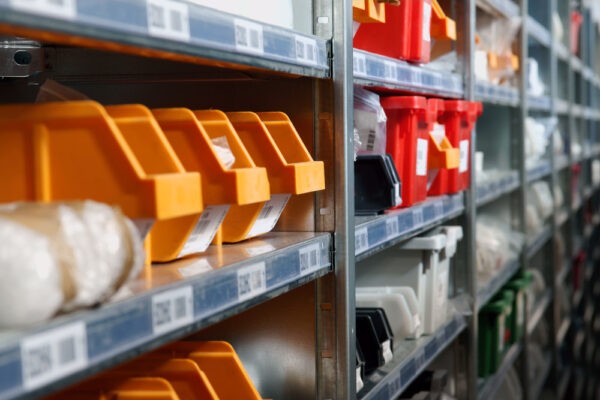5 Reasons Not To Inventory Equipment Components

Effective inventory management plays a crucial role in optimizing operations and minimizing costs. But when it comes to repair and maintenance parts and components, manufacturers often face a complex decision regarding inventory maintenance. Balancing the need for timely repairs with the associated costs and logistical challenges, many manufacturers opt to forgo in-house inventory and instead outsource equipment servicing entirely.
From the cost considerations and supply chain efficiency to space constraints and specialization, various factors influence this strategic choice. Does it make sense for you to carry inventory for parts and components, or is the job best left to an outsourced provider?
1. Cost considerations
Managing an in-house inventory requires an initial investment in buying and storing parts along with warehousing expenses. Unfortunately, this means fronting the cost of maintenance that hasn’t been performed — and might never be, depending on unforeseen circumstances. What happens if the parts you stock become obsolete, or you overstock? Inventory becomes a sunk cost — or, at best, you carry the inventory on the balance sheet instead of in cash.
Outsourcing the inventory can eliminate these risks and expenses, allowing you to focus on your core business operations. The risk of maintaining inventory falls on your outsourcing partner — not on you.

2. Supply chain efficiency
Using lean manufacturing principles and decreasing waste and inventory levels are vital to achieving supply chain efficiency. A just-in-time (JIT) manufacturing strategy and partnerships with third-party suppliers for parts and components reduce the need to maintain large inventories. Outsourcing the inventory to authorized service providers can also lessen the supplier management burden on the manufacturer.
In short, outsourcing makes the entire process more streamlined and efficient. This allows producers to focus on optimizing the value stream instead of maintaining it.
3. Space and storage constraints
Among the challenges of maintaining an in-house inventory are the constraints of physical space and storage. Warehouse capacity restrictions and expensive storage solutions can become major hindrances to an effective inventory management system. Proper storage conditions such as temperature, humidity, and regulatory compliance for hazardous materials can also consume valuable time and resources. Outsourcing can eliminate these constraints by providing the required space, equipment, and expert knowledge to maintain the inventory.

4. Specialization and complexity
When manufacturers don’t need to inventory equipment components, they can focus on creating quality products. With diverse product lines requiring a wide range of parts and components, it can be difficult to accurately predict demand — and you can quickly tie up capital if you over-order. Rapid product iterations, including frequent design changes and increased variability in required parts, further add to the complexity of managing inventory.
By outsourcing, manufacturers can free up time and resources to focus on their core competencies while enjoying peace of mind knowing trained professionals are working on their equipment.
5. Aftermarket expertise
Ultimately, handing over maintenance operations to a trusted partner divests manufacturers of the responsibility of training and maintaining these operations in-house. There’s no need to invest in specialized training or hire specifically for a certain skill set. Moreover, the on-demand nature of third-party services means talent isn’t going to waste.
Aftermarket service providers offer flexibility that gets results — all without the hassle of cultivating or managing an in-house team.